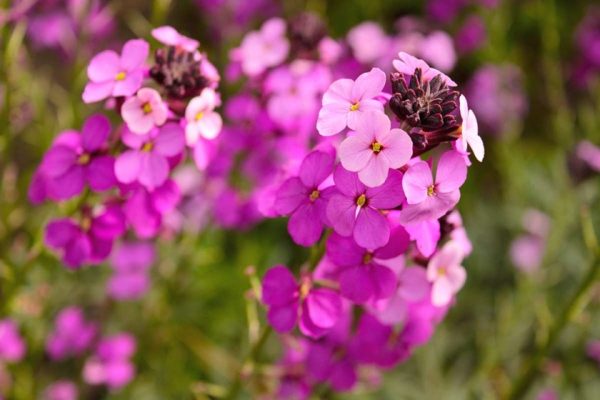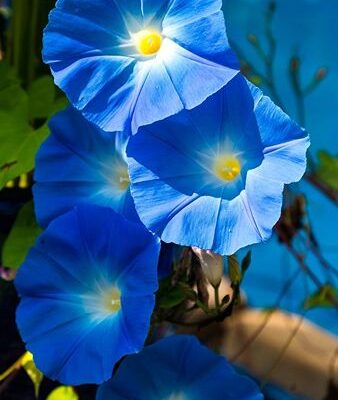Discover 15 Lovely Types of Lantana Plants
If you want to add a vibrant color to your garden, cultivating various types of lantana flowers can be a wonderful and visually striking way to do so. While you may be familiar with common flowers like roses, sunflowers, daisies, and marigolds, lantana plants offer a unique and appealing addition to any garden.
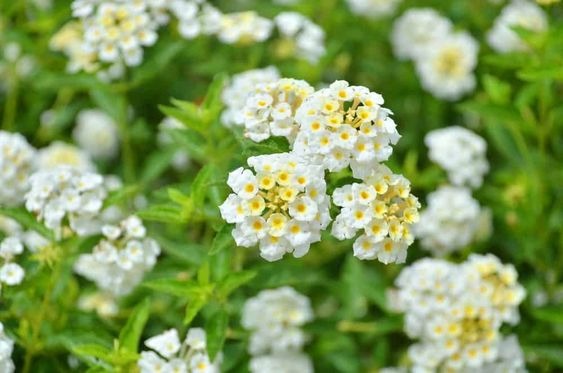
Belonging to the Verbenaceae family, lantana flowering plants are adored by flower lovers for their ability to withstand drought and continue to bloom colorful flowers for years to come. However, it is important to note that there are different types of lantana plants, and each variant possesses its own unique characteristics.
Whether you are looking for a ground cover or a shrub, there is a lantana plant that can fit your needs. Some lantana plants produce clusters of tiny flowers, while others produce larger blooms that can be red, yellow, orange, pink, or white. Additionally, some lantana plants are more cold-tolerant, while others thrive in warm climates.
Types of Lantana
Lantana camara belongs to the family Verbenaceae, which is part of the order Lamiales, and falls under the class Magnoliopsida. Despite its aesthetic appeal, this plant is considered invasive and can quickly overtake areas outside of domestic cultivation, forming dense thickets.
Despite this, lantana flowers are not only visually appealing, but they also play an important role in ecology. Their nectar serves as a valuable food source for pollinators such as hummingbirds, bees, and butterflies.
In addition to their ecological significance, lantana leaves are also used to produce medicinal products such as antiseptics, and are useful for treating various health ailments. However, it is important to note that there are different types of lantana flowers available, each with its own unique characteristics and uses.
Before introducing lantana plants into your garden, it is crucial to have an understanding of the varying types available. Despite their potential invasive nature, with proper care and management, lantana flowers can be a visually stunning and ecologically beneficial addition to any landscape.
1. Bandana Pink Lantana
The Bandana Pink Lantana is a highly heat-tolerant plant that is capable of producing a vast range of colored flowers including shades of black, brown, blue, yellow, cream, lavender, red, white, and many more. Although it is hardy, it may struggle to survive under adverse weather conditions.
Due to its high tolerance to extreme humid conditions, this plant is often used near pools and hot tubs, making it a great pick for gardening enthusiasts. With its extensive coverage, the Bandana Pink Lantana can also be used as a ground cover. However, it is important to note that this plant is known to spread rapidly through underground stems, so it is recommended to use herbicides to control its growth.
If left to spread freely, it may overpower surrounding plants and make it difficult to remove later. Therefore, it is best to keep it in check and ensure it does not grow out of control.

2. Chapel Hill Yellow Lantana
The Chapel Hill Yellow lantana is a type of lantana plant that is a hardy option for those looking for a smaller plant, only growing up to 1 to 2 feet in height, but up to 3 to 4 feet in width. It produces bright yellow flowers with a sweet fragrance that stands out against its dark green foliage.
This lantana variety requires loamy soil that is moderately-to-well drained, and with proper care, it can thrive. It is resistant to insects, drought, disease, and heat. Interestingly, even deer seem to avoid this plant.

3. Dallas Red Lantana
The Dallas Red Lantana is a species of lantana that is highly sought after for its large size and ability to attract pollinators. The flowers of this lantana variety have a unique color palette, with a dark orange center that gradually turns into a bright red as the flower matures.
One of the reasons why the Dallas Red lantana is so popular is its ability to grow quickly and adapt to different soil conditions. It is commonly used in both residential and commercial landscapes, especially on hillsides to help reduce soil erosion.
While the Dallas Red lantana is drought-resistant, it is important to note that prolonged periods of little moisture can cause the leaves of the flowers to drop off. However, with proper watering, the leaves will grow back quickly.

4. Dwarf Lantana
The dwarf lantana is a popular choice for those looking to add some greenery to small spaces such as patios or balconies. These plants have a compact growth habit and are easy to care for. They are often grown in small containers such as boxes, tubs, or hanging baskets.
One of the benefits of the dwarf lantana is that its growth is naturally limited, meaning it won’t take up too much space. Additionally, they are relatively low maintenance, only requiring regular watering to keep them healthy. Fertilizing the plant every month or two will help promote robust flower blooms.

5. Evergreen Lantana
The Evergreen Lantana is a type of flowering plant that lives up to its name as it never goes dormant. Although it may not bloom throughout the year, it exhibits dazzling colors of pink and yellow during July. Even in the winter season, it continues to produce lush greens despite the absence of flowers.
This plant is a great addition to any garden as its fresh greens are always vibrant and beautiful, with darker and lighter green shades complementing each other well. It’s a low-maintenance plant that requires minimal care and attention.

6. Hybrid Lantana
The hybrid lantana is a flowering plant that produces blooms for an extended period, particularly during warm weather. While it can grow in partial shade, it thrives under direct sunlight. As the name suggests, the hybrid lantana possesses traits of multiple lantana species.
Some hybrids have elongated leaves with few spikes, while others have runners but no flowers. The hybrid lantana is available in a variety of selections and boasts an array of colors.
In regions with mild winters, these plants are perennials, whereas in areas with frigid temperatures all year round, they are annuals.
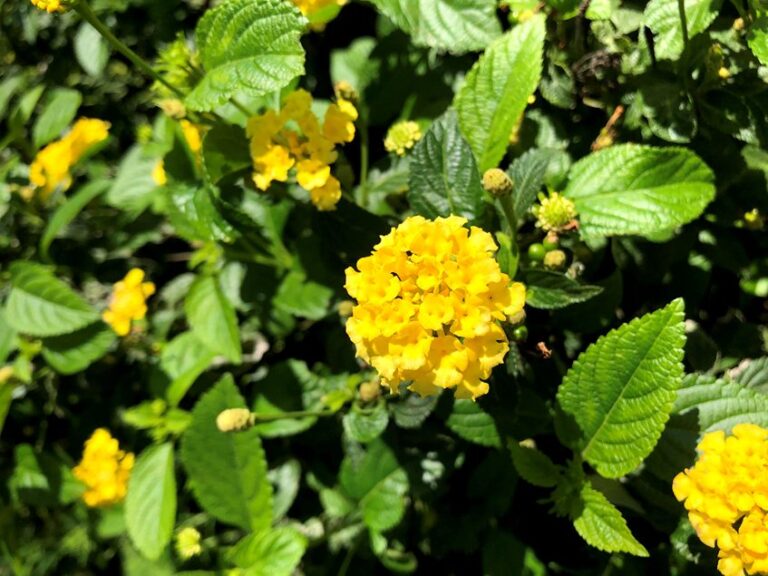
7. Lantana Lucky Lavender
Lantana Lucky Lavender is a compact plant that produces lovely lavender flowers with yellow ones in between, making it a beautiful addition to any garden or container. It has a high rate of blooming and will continue to produce flowers throughout the season.
One of the great qualities of this plant is its tolerance to both excessive heat and drought. While it doesn’t produce many berries, the focus is on the beautiful flowers it produces.
Even if you’re a beginner gardener, you can still enjoy growing the lucky lavender lantana. However, it’s worth noting that professionals often use this plant in their landscaping designs due to its charming colors and desirable traits.

8. Lantana Radiation
Lantana Radiation is a type of lantana flower that is perfect for border plants. It is easy to maintain and grows well in hot climates. This plant is drought-tolerant, so excessive watering is not necessary.
During the growing season, it is essential to water the plant regularly to ensure the healthy establishment of roots. However, once it is grown, it does not require regular watering. Over-fertilizing this plant is not recommended as it can rot the roots permanently.
One important thing to note is that Lantana Radiation has sharp spikes on its stem. Therefore, it is advisable to wear protective gloves before pruning the edges to avoid any accidents.
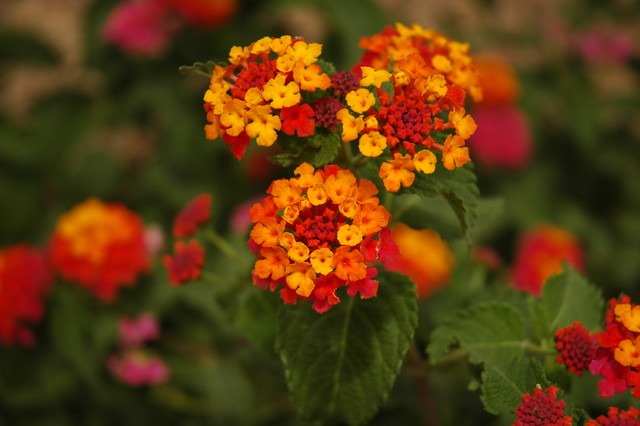
9. Mountain Lantana
The mountain lantana is another popular variety of flowering plants that boasts large, shiny leaves and pinkish, yellowish, or reddish flowers. Interestingly, the leaves of this lantana plant change color, turning yellow during the fall season, which can add an extra touch of visual interest to any landscape.
Similar to the tropical lantana, the mountain lantana requires very little maintenance during its blooming period. Light fertilization every two weeks until the spring season should suffice.
Additionally, the mountain lantana does not require frequent watering as it can thrive in dry climates. As long as there is enough rainfall throughout the year, this plant can flourish. Combining the mountain lantana with purple-colored aster can create a stunning and vibrant flowerbed with a delightful contrast of colors.

10. New Gold Lantana
The New Gold Lantana is a unique plant that was created through hybridization of Montevidensis and Lantana Camara. It has a low mounding stature which makes it perfect for use as ground cover. This plant is suitable for planting in both indoor and outdoor areas, including gardens or yards.
Unlike some of the other lantana varieties, the New Gold Lantana is more tolerant to cold temperatures. It grows best in moist soil and thrives in full sunlight or partial shade. During the blooming season, which is year-round, this plant is sure to impress with its vibrant and long-lasting flowers.
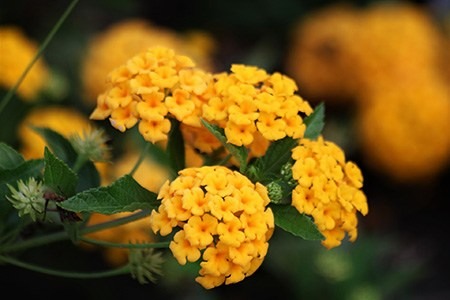
11. Pineland Lantana
The Pineland lantana species, which is native to South Florida, offers several advantages for flower beds. These plants have a low height, making them a great option for those who prefer a low-growing garden. One of their major appeals is their ability to attract butterflies, which may be due to the bright yellow coloring of their flowers.
If you wish to keep these plants contained, you can either grow them in containers or maintain them regularly since they tend to grow out horizontally over time. However, their drought-hardy nature makes them easy to care for, and they require little water.
You can plant Pineland lantanas in landscape islands around trees, on your patio or deck, or even near your swimming pool area. With their beautiful colors and desirable qualities, these lantana species are an excellent addition to any garden.
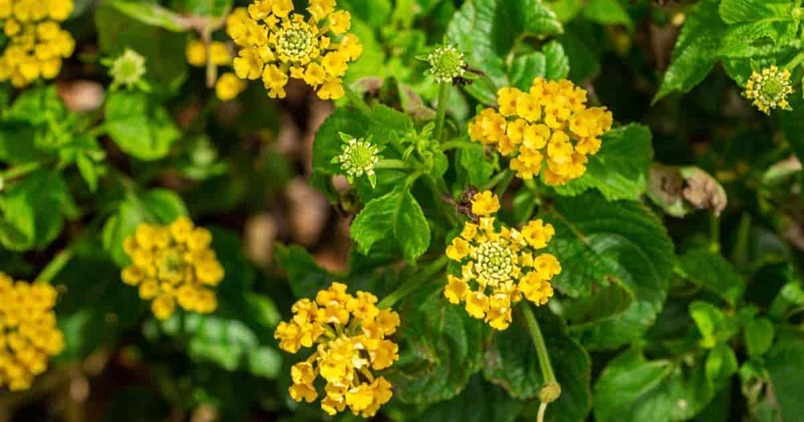
12. Prairie Lantana
The Prairie Lantana is a unique type of lantana plant that grows in grasslands, specifically in North America. Unlike other lantana plants, it does not produce blooming flowers, but rather grows runners from its underground stems.
However, when placed alongside other flowering plants, the Prairie Lantana can still produce flowers. It grows best in soil that is moist and well-draining and thrives in full sunlight. Interestingly, the Prairie Lantana is known for its resilience, able to withstand cold and breezy conditions without succumbing to damage.
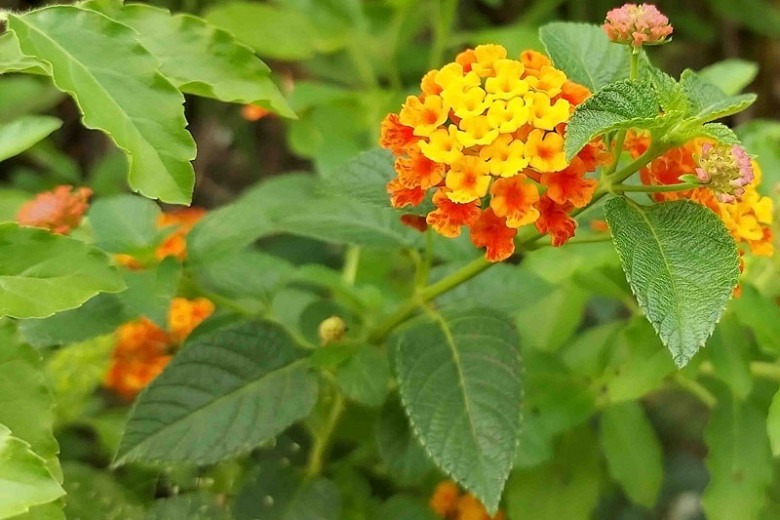
13. Pumpkin Patch Lantana
The Pumpkin Patch Lantana is a type of flowering plant with vibrant orangish-colored flowers, reminiscent of pumpkins, and greenish-yellow leaves. It is best suited for a moist environment, and therefore it requires soil with good moisture content to grow and thrive.
For optimal growth and flower production, these lantanas require direct sunlight exposure. In colder temperatures, it’s advisable to keep the plant in an area with a temperature of about 50°F to avoid damage.
To keep the plant healthy, water it once a week; make sure not to overwater it. Pumpkin Patch lantanas grow best in places with plenty of sunlight.
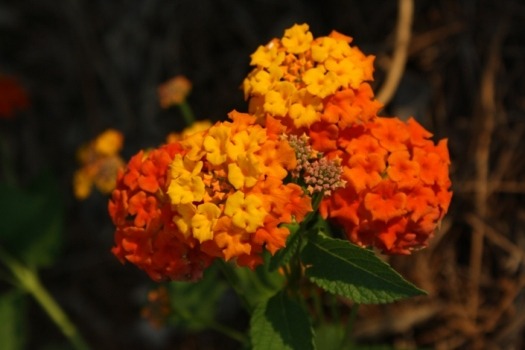
14. Silver Mound Lantana
The Silver Mound Lantana is a perennial plant that produces yellow flowers that turn white as they mature. This plant blooms throughout the year except in areas with frosty weather where it only blooms from spring to fall. It is highly resistant to extreme heat and long periods of drought, making it an ideal choice for gardeners in hot and dry climates. Its attractive flowers are known to attract hummingbirds, bees, and butterflies to your garden.
The Silver Mound Lantana is a versatile plant that can be grown in containers, tubs, or in the ground next to other colorful flowers to create a contrasting look. Its elegant white flowers can add a touch of sophistication to any garden or patio. Whether you’re a seasoned gardener or a beginner, this plant is easy to maintain and can add a stunning touch to your landscape.

15. Tropical Lantana
The tropical lantana, also referred to as crimson lantana, is a flowering plant that produces vibrant blooms during late summer. The flowers grow in close proximity to each other and are predominantly crimson red, although they can range in color from salmon pink to yellow, and even purple in some cases.
In addition to its striking flowers, the tropical lantana also produces red berries that can serve as a food source for various bird species, with the exception of mammals.
While the tropical lantana can tolerate shade, it thrives in full sunlight, resulting in a more vibrant and lively appearance. Fortunately, this plant requires minimal watering, making it relatively low maintenance.
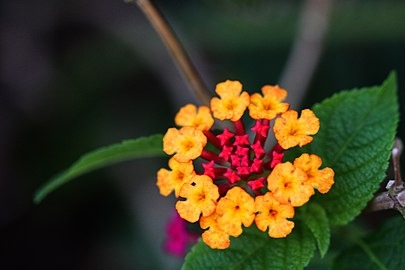
More Types of Lantana Species
There are various other types of lantana flowers that are available for cultivation. You can continue your exploration.
